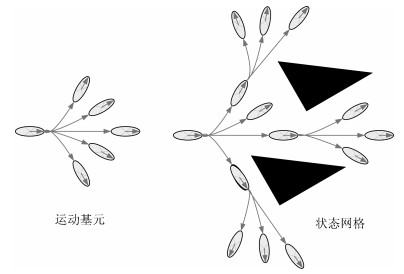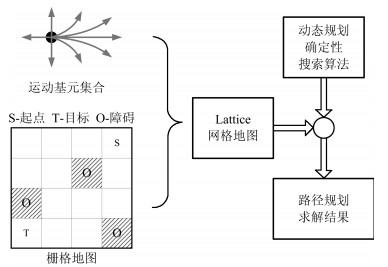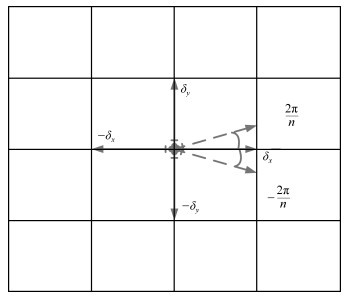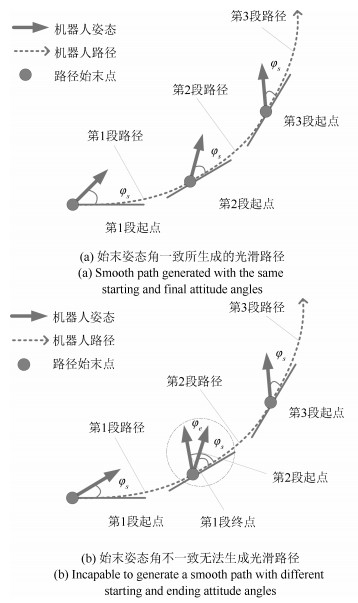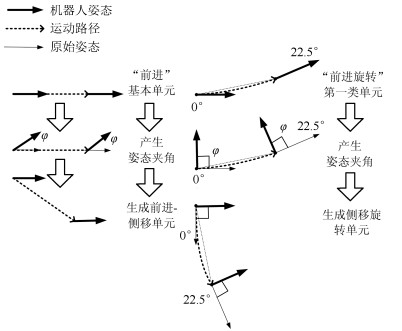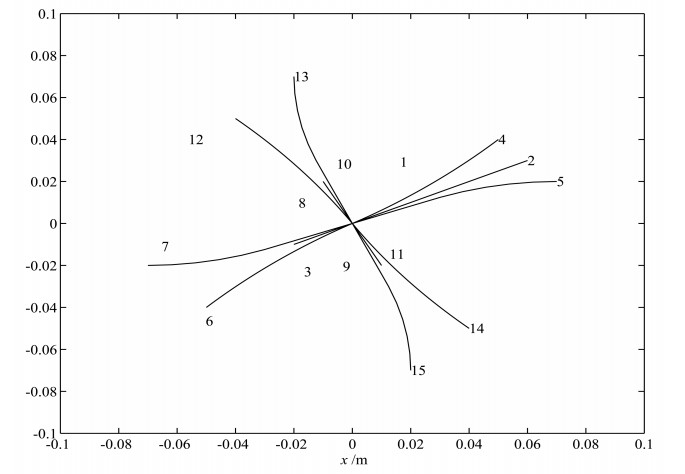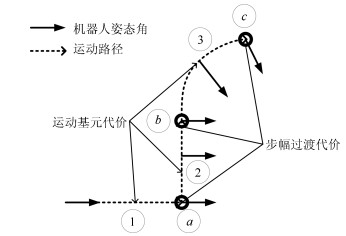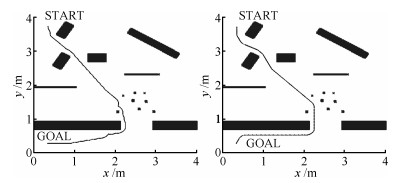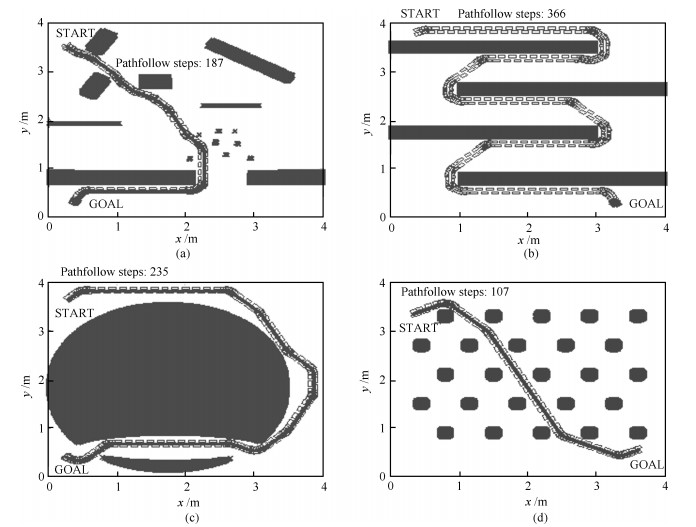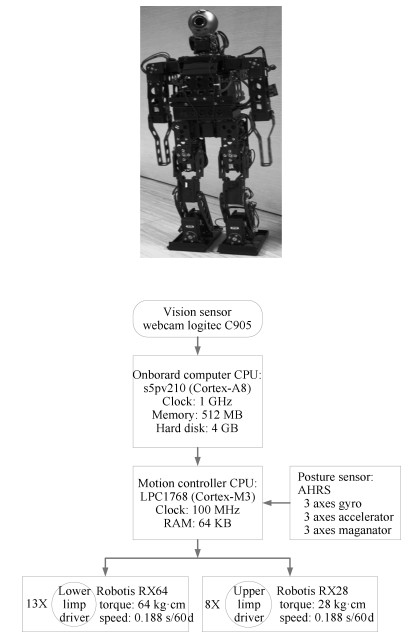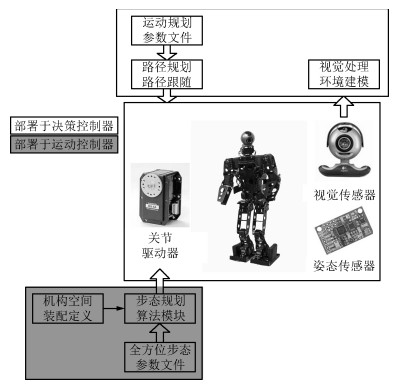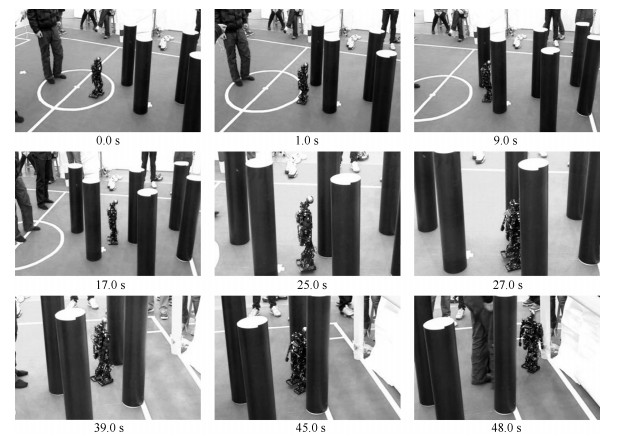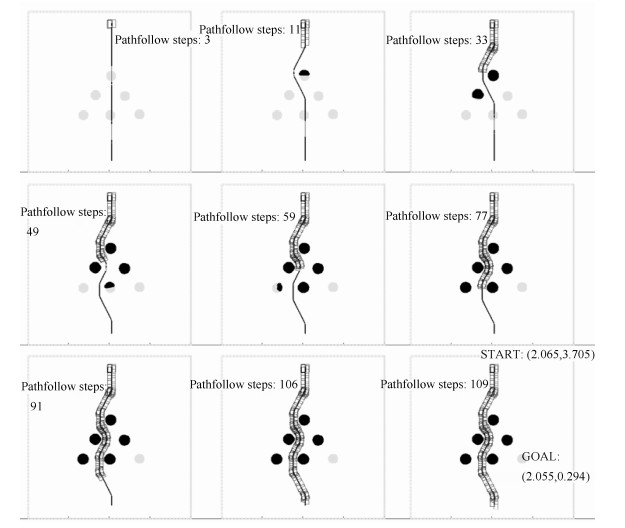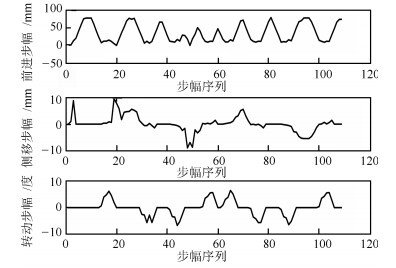|
[1]
|
Spong M W, Hutchinson S, Vidyasagar M. Robot Modeling and Control. Hoboken, NJ, USA:John Wiley and Sons, 2006.
|
|
[2]
|
Latombe J C. Robot Motion Planning. Berlin, Germany:Springer, 1991.
|
|
[3]
|
Choset H, Lynch K M, Hutchinson S, Kantor G A, Burgard W, Kavraki L E, Thrun S. Principles of Robot Motion:Theory, Algorithms, and Implementations. Cambridge, UK:A Bradford Book, 2005.
|
|
[4]
|
Lavalle S M. Planning Algorithms. Cambridge, USA:Cambridge University Press, 2006.
|
|
[5]
|
Xia Z Y, Xiong J, Chen K. Global navigation for humanoid robots using sampling-based footstep planners. IEEE/ASME Transactions on Mechatronics, 2011, 16(4):716-723 doi: 10.1109/TMECH.2010.2051679
|
|
[6]
|
Hornung A, Maier D, Bennewitz M. Search-based footstep planning. In:Proceedings of the 2013 ICRA Workshop on Progress and Open Problems in Motion Planning and Navigation for Humanoids. Karlsruhe, Germany:IEEE, 2013.
|
|
[7]
|
Xia Z Y, Chen G D, Xiong J, Zhao Q F, Chen K. A random sampling-based approach to goal-directed footstep planning for humanoid robots. In:Proceedings of the 2009 IEEE/ASME International Conference on Advanced Intelligent Mechatronics. Singapore:IEEE, 2009. 168-173
|
|
[8]
|
Xia Z Y, Xiong J, Chen K. Parameter self-adaptation in biped navigation employing nonuniform randomized footstep planner. Robotica, 2010, 28(6):929-936 doi: 10.1017/S0263574709990804
|
|
[9]
|
Liu H, Sun Q, Zhang T W. Hierarchical RRT for humanoid robot footstep planning with multiple constraints in complex environments. In:Proceedings of the 2012 IEEE/RSJ International Conference on Intelligent Robots and Systems. Vilamoura:IEEE, 2012. 3187-3194
|
|
[10]
|
Huang W W, Kim J, Atkeson C G. Energy-based optimal step planning for humanoids. In:Proceedings of the 2013 IEEE International Conference on Robotics and Automation. Karlsruhe:IEEE, 2013. 3124-3129
|
|
[11]
|
Perrin N, Stasse O, Baudouin L, Lamiraux F, Yoshida E. Fast humanoid robot collision-free footstep planning using swept volume approximations. IEEE Transactions on Robotics, 2012, 28(2):427-439 doi: 10.1109/TRO.2011.2172152
|
|
[12]
|
Maier D, Lutz C, Bennewitz M. Integrated perception, mapping, and footstep planning for humanoid navigation among 3D obstacles. In:Proceedings of the 2013 IEEE/RSJ International Conference on Intelligent Robots and Systems (IROS). Tokyo:IEEE, 2013. 2658-2664
|
|
[13]
|
张继文, 刘莉, 李昌硕, 陈恳.仿人机器人参数化全方位步态规划方法.机器人, 2014, 36(2):210-217 http://www.cnki.com.cn/Article/CJFDTOTAL-JQRR201402011.htmZhang Ji-Wen, Liu Li, Li Chang-Shuo, Chen Ken. Parametric Omni-directional gait planning of humanoid Robots. Robot, 2014, 36(2):210-217 http://www.cnki.com.cn/Article/CJFDTOTAL-JQRR201402011.htm
|
|
[14]
|
Yoshida E, Esteves C, Belousov I, Laumond J P, Sakaguchi T, Yokoi K. Planning 3-D collision-free dynamic robotic motion through iterative reshaping. IEEE Transactions on Robotics, 2008, 24(5):1186-1198 doi: 10.1109/TRO.2008.2002312
|
|
[15]
|
Hornung A, Bennewitz M. Adaptive level-of-detail planning for efficient humanoid navigation. In:Proceedings of the 2012 IEEE International Conference on Robotics and Automation. Saint Paul:IEEE, 2012. 997-1002
|
|
[16]
|
Sprunk C, Lau B, Pfaffz P, Burgard W. Online generation of kinodynamic trajectories for non-circular omnidirectional robots. In:Proceedings of the 2011 IEEE International Conference on Robotics and Automation. Shanghai, China:IEEE, 2011. 72-77
|
|
[17]
|
Pivtoraiko M, Knepper R A, Kelly A. Differentially constrained mobile robot motion planning in state lattices. Journal of Field Robotics, 2009, 26(3):308-333 doi: 10.1002/rob.v26:3
|
|
[18]
|
Likhachev M, Ferguson D. Planning long dynamically feasible maneuvers for autonomous vehicles. The International Journal of Robotics Research, 2009, 28(8):933-945 doi: 10.1177/0278364909340445
|
|
[19]
|
张浩杰, 龚建伟, 姜岩, 熊光明, 陈慧岩.基于变维度状态空间的增量启发式路径规划方法研究.自动化学报, 2013, 39(10):1602-1610 doi: 10.3724/SP.J.1004.2013.01602Zhang Hao-Jie, Gong Jian-Wei, Jiang Yan, Xiong Guang-Min, Chen Hui-Yan. Research on incremental heuristic path planner with variable dimensional state space. Acta Automatica Sinica, 2013, 39(10):1602-1610 doi: 10.3724/SP.J.1004.2013.01602
|
|
[20]
|
Bertsekas D P. Dynamic Programming and Optimal Control (Third edition). Belmont, Mass:Athena Scientific, 2005.
|
|
[21]
|
Kavraki L E, Svestka P, Latombe J C, Overmars M H. Probabilistic roadmaps for path planning in high-dimensional configuration spaces. IEEE Transactions on Robotics and Automation, 1996, 12(4):566-580 doi: 10.1109/70.508439
|
|
[22]
|
Lavalle S M. Randomized kinodynamic planning. The International Journal of Robotics Research, 2001, 20(5):378-400 doi: 10.1177/02783640122067453
|
|
[23]
|
Likhachev M, Gordon G J, Thrun S. ARA*:anytime A* with provable bounds on sub-optimality. In:Advances in Neural Information Processing Systems. Massachusetts:MIT Press, 2003. 767-774
|
|
[24]
|
Likhachev M, Ferguson D, Gordon G, Stentz A, Thrun S. Anytime search in dynamic graphs. Artificial Intelligence, 2008, 172(14):1613-1643 doi: 10.1016/j.artint.2007.11.009
|
|
[25]
|
Likhachev M. Sbpl ROS wiki[Online], available:http://wiki.ros.org/sbpl, June 30, 2015.
|
 百度学术
百度学术 百度学术
百度学术 百度学术
百度学术 百度学术
百度学术 百度学术
百度学术 百度学术
百度学术 百度学术
百度学术 百度学术
百度学术 百度学术
百度学术 百度学术
百度学术 百度学术
百度学术 本站查看
本站查看 本站查看
本站查看 百度学术
百度学术 百度学术
百度学术 百度学术
百度学术 百度学术
百度学术 百度学术
百度学术 百度学术
百度学术 百度学术
百度学术 百度学术
百度学术 百度学术
百度学术 百度学术
百度学术 百度学术
百度学术 百度学术
百度学术 百度学术
百度学术 百度学术
百度学术 百度学术
百度学术 百度学术
百度学术





 下载:
下载:
